- Home
- H. G. Wells
A Short History of the World Page 3
A Short History of the World Read online
Page 3
The Outline of History, composed with advice from eminent historians and scientists, appeared in twenty-four fortnightly parts from November 1919 to November 1920. Book versions began to appear during 1920 and Wells's history was soon translated into numerous languages, beginning with Japanese and Swedish. By the middle of the 1920s sales in English alone had passed the half million mark. They would eventually reach two million. As late as 1941 John Huston's film version of The Maltese Falcon could include a passing reference to ‘Mr Wells's history’ with confidence that many cinema-goers would recognize the allusion.
Following the success of the Outline, Wells felt the need for a complementary account which would be briefer and more easily assimilable. He was correct in stating that his Short History of the World was not a simple abridgement of the Outline which runs to 780 pages and has hundreds of photographs, maps and black and white drawings, plus 47 colour plates. The material was restructured, rewritten and augmented; nonetheless many passages are identical. The first edition of A Short History (London: Cassell, 1922) featured 190 photographs and drawings, 21 maps and diagrams by J. F. Horrabin, a chronology and an index.
Although small errors were gradually corrected as the text was reprinted, Wells did not actively revise the Short History even when it was included in Volume 27 of the Atlantic Edition of his works (NY: Scribner's, 1927; London: T. Fisher Unwin, 1927), nor when it first appeared as volume 6 in the Thinker's Library (London: C. A. Watts, 1929). However, as the Second World War, which he had prophesied, drew near, he revised subsequent Thinker's Library editions to record its development. The process began in 1934 with an expansion of the last two chapters; in 1938 he added two new chapters, taking events up to the Nazi annexation of Austria; and in 1941 he inserted a further chapter covering the war, which he placed between the two chapters added previously. In 1945, in the final version produced in his lifetime, the seventy-nine-year-old Wells replaced the concluding chapter with two further ones, entitled ‘The Present Outlook for Homo sapiens’ and ‘From 1940–1944: Mind at the End of its Tether’. It is perhaps a sign of Wells's decline in old age that, despite the promise of the final chapter title, he brought events no further than December 1941, later developments being covered solely in the revised chronological table. The new textual additions were mostly concerned with the early development of the planet and of the human race, but were not sufficiently thorough to note the discovery of the planet Pluto fifteen years previously. The final chapter of the 1945 text, with some minor revisions and new introductory material expressing increased doubt about the future of mankind, was later reprinted as a separate volume, Mind at the End of its Tether (London: Heinemann, 1945).
The Short History formed the basis of two other titles published during Wells's lifetime. In A Short History of Mankind (Oxford: Basil Blackwell, 1925), which was intended for school use, E. H. Carter reduced the text from sixty-seven to forty-three short chapters, simplifying its grammar and vocabulary. Carter added different illustrations, time charts, a subject index and a pronouncing index; he removed criticism of European imperialism, added praise of the British Empire and judiciously inserted the phrase ‘let us hope’ in the final paragraph. (The title A Short History of Mankind, or something very similar, had originally been considered for Wells's book, but was judged to have been pre-empted when the American Hendrik Van Loon's world history The Story of Mankind was published in 1921.) In Germany, the last eleven chapters of Wells's Short History were reprinted for students of English, with an introduction and notes in German, as A Short History of Modern Times (Leipzig: Tauchnitz, 1926).
After Wells's death, his elder son G. P. Wells brought the chronological table up to 1946 for the Thinker's Library edition of 1948. A more thorough revision was carried out by Raymond Postgate and G. P. Wells in 1965, revising Wells's text and reducing it from seventy-one to sixty-six chapters, then adding five new ones to bring events to the Cuba crisis of 1963 (London: Collins, 1965). Twenty-two years later, Philip Ziegler added an introduction and updated the book with a further chapter for An Illustrated Short History of the World (Exeter: Webb & Bower, in association with London: Michael Joseph, 1987).
The present Penguin Classics edition restores the original 1922 text, which has been completely reset, removing a number of misprints which accumulated in later editions such as ‘defeat’ for ‘defect’ (Chapter 41), ‘Boniface VII’ for ‘Boniface VIII’ (Chapter 47) and ‘Morally’ for ‘Morelly’ (Chapter 59). End-notes have been added, most of them to record where more recent research has altered understanding, others to clarify allusions or to place Wells's ideas in the context of his work as a whole.
Various amendments have been made to the text, bringing it into line with Penguin housestyle for greater clarity and consistency. Numbers below 100 have been printed as words, higher numbers up to one million, and measurements, have been printed as numerals. All dates have been printed in the form ‘March 4th 1861’. Capitals have been used consistently for such proper nouns as ‘Earth’ and ‘King’. Hyphens have been deleted from noun phrases like ‘made-road’ and ‘sailing-ship’, and in others like ‘today’, ‘psycho-analysis’ and ‘preoccupied’ the two parts have been combined into one word. The accent has been removed from ‘rôle’. ‘Blonde’ has been changed to ‘blond’ as a descriptive word for a racial type and ‘brunette’ to ‘brunet’. The use of commas, italics, colons and semi-colons has been checked and made consistent. Commas have also been removed from dates such as ‘October, 1864’ and rationalized on the rare occasions when they might be in danger of impeding sense. Full stops have been removed from the abbreviations ‘St.’, ‘Dr.’, ‘B.C.’ and ‘A.D.’. Single quotation marks have been substituted for doubles, with doubles employed inside singles. Chapter numbers have been changed from Roman to Arabic numerals.
Incidental spellings have generally been brought into line with house usage: for example, ‘centring’ rather than ‘centering,’ ‘Moslem’ for ‘Moslim’ and ‘judgement’ for ‘judgment’. However, some idiosyncratic spellings which are particularly characteristic of Wells have been retained, e.g. ‘burthen’. His versions of place-names have also been retained on the grounds that they are intelligible to English-speakers, whereas more recent official names are sometimes unfamiliar or subject to continuing change. The one exception to this policy on place names is the potentially confusing spelling ‘Buda-Pesth’, recorded in the list below of single emendations.
The sources of these emendations are indicated by date.
1924 = Labour Publishing Co., 1924, which conveniently brings together early corrections to the text
1929 = the first Thinker's Library edition, Watts, 1929
1941 = Watts, 1941, revised by Wells
1965 = Collins, 1965, revised by Raymond Postgate and G. P. Wells.
The remaining emendations are the editor's own.
Page:line
Reading adopted
Reading rejected
3:4
The World in Space (1924)
The World of Space
12:4
million (1929)
millions
12:13
2,793 (1924)
1,793
12:24
175 yards (1965)
175 feet
15:35
upon
up on
33:20
Another thing (1929)
And another thing
45:5
were very (1941)
was very
48:23
‘in Asia or Africa’ (1965)
in Asia or Africa
59:3
Elliot Smith
Eliot Smith
70:34
gypsies (1929)
gipsies
84:12
sort of men (1924)
sort of man
116:3
eastern
western
146:16
Gauls (1965)
&nb
sp; Goths
244:26
Budapest (1929)
Buda-Pesth
295:7
'thirties and 'forties
thirties and forties
It seems that the original manuscript and proofs of the Short History no longer exist. The Special Collections Library at the University of Illinois preserves instead what appears to be an ongoing manuscript of the Short History, made up of several hundred pages of holograph, typescript, and mixed holograph and corrected typescript, containing material from several editions of the book.
The present edition is the first critical edition of the Short History. Any errors and flaws are therefore solely the responsibility of the present editor.
I would like to thank the many people who have given me their help in preparing this edition, especially Sylvia Hardy, Patrick Parrinder, Ian and Janice Stanley, Lindeth Vasey, Sally Boyles and the staff of the London Borough of Bromley Local Studies Library.
Michael Sherborne
A SHORT HISTORY OF THE WORLD
CONTENTS
List of Maps
Preface
1 The World in Space
2 The World in Time
3 The Beginnings of Life
4 The Age of Fishes
5 The Age of the Coal Swamps
6 The Age of Reptiles
7 The First Birds and the First Mammals
8 The Age of Mammals
9 Monkeys, Apes and Sub-men
10 The Neanderthaler and the Rhodesian Man
11 The First True Men
12 Primitive Thought
13 The Beginnings of Cultivation
14 Primitive Neolithic Civilizations
15 Sumeria, Early Egypt and Writing
16 Primitive Nomadic Peoples
17 The First Sea-going Peoples
18 Egypt, Babylon and Assyria
19 The Primitive Aryans
20 The Last Babylonian Empire and the Empire of Darius I
21 The Early History of the Jews
22 Priests and Prophets in Judea
23 The Greeks
24 The Wars of the Greeks and Persians
25 The Splendour of Greece
26 The Empire of Alexander the Great
27 The Museum and Library at Alexandria
28 The Life of Gautama Buddha
29 King Asoka
30 Confucius and Lao Tse
31 Rome Comes into History
32 Rome and Carthage
33 The Growth of the Roman Empire
34 Between Rome and China
35 The Common Man's Life under the Early Roman Empire
36 Religious Developments under the Roman Empire
37 The Teaching of Jesus
38 The Development of Doctrinal Christianity
39 The Barbarians Break the Empire into East and West
40 The Huns and the End of the Western Empire
41 The Byzantine and Sassanid Empires
42 The Dynasties of Suy and Tang in China
43 Muhammad and Islam
44 The Great Days of the Arabs
45 The Development of Latin Christendom
46 The Crusades and the Age of Papal Dominion
47 Recalcitrant Princes and the Great Schism
48 The Mongol Conquests
49 The Intellectual Revival of the Europeans
50 The Reformation of the Latin Church
51 The Emperor Charles V
52 The Age of Political Experiments; of Grand Monarchy and Parliaments and Republicanism in Europe
53 The New Empires of the Europeans in Asia and Overseas
54 The American War of Independence
55 The French Revolution and the Restoration of Monarchy in France
56 The Uneasy Peace in Europe that Followed the Fall of Napoleon
57 The Development of Material Knowledge
58 The Industrial Revolution
59 The Development of Modern Political and Social Ideas
60 The Expansion of the United States
61 The Rise of Germany to Predominance in Europe
62 The New Overseas Empires of Steamship and Railway
63 European Aggression in Asia, and the Rise of Japan
64 The British Empire in 1914
65 The Age of Armament in Europe, and the Great War of 1914–18
66 The Revolution and Famine in Russia
67 The Political and Social Reconstruction of the World
Chronological Table
LIST OF MAPS
Possible Outline of Europe and Western Asia at the Maximum of the Fourth Ice Age (about 50,000 years ago)
A Diagrammatic Summary of Current Ideas of the Relationship of Human Races
Map showing the Relation of the Median and Second Babylonian (Chaldean) Empires in the Reign of Nebuchadnezzar the Great
The Empire of Darius (Tribute-paying Countries) at its Greatest Extent
The Land of the Hebrews
The Extent of the Roman Power and its Alliances about 150 BC (i.e. on the Eve of the Third Punic War)
The Empire and the Barbarians
The Growth of the Moslem Power in 25 Years
The Moslem Empire, 750 AD
Area More or Less under Frankish Dominion in the Time of Charles Martel
Europe at the Death of Charlemagne – 814
The Empire of Jengis Khan at His Death (1227)
The Ottoman Empire before 1453
The Ottoman Empire at the Death of Suleiman the Magnificent, 1566 AD
Central Europe after the Peace of Westphalia, 1648
Britain, France and Spain in America, 1750
The United States, showing Extent of Settlement in 1790
Europe after the Congress of Vienna
Map of Europe, 1848–1871
The British Empire in 1815
Overseas Empires of European Powers, January 1914
PREFACE
This Short History of the World is meant to be read straight-forwardly almost as a novel is read. It gives in the most general way an account of our present knowledge of history, shorn of elaborations and complications. It has been amply illustrated, and everything has been done to make it vivid and clear. From it the reader should be able to get that general view of history which is so necessary a framework for the study of a particular period or the history of a particular country. It may be found useful as a preparatory excursion before the reading of the author's much fuller and more explicit Outline of History1 is undertaken. But its especial end is to meet the needs of the busy general reader, too driven to study the maps and time charts of that Outline in detail, who wishes to refresh and repair his faded or fragmentary conceptions of the great adventure of mankind. It is not an abstract or condensation of that former work. Within its aim the Outline admits of no further condensation. This is a much more generalized History, planned and written afresh.
H. G. Wells
1
The World in Space
The story of our world is a story that is still very imperfectly known. A couple of hundred years ago men possessed the history of little more than the last 3,000 years. What had happened before that time was a matter of legend and speculation. Over a large part of the civilized world it was believed and taught that the world had been created suddenly in 4004 BC, though authorities differed as to whether this had occurred in the spring or autumn of that year. This fantastically precise misconception was based upon a too literal interpretation of the Hebrew Bible, and upon rather arbitrary theological assumptions connected therewith. Such ideas have long since been abandoned by religious teachers, and it is universally recognized that the universe in which we live has to all appearances existed for an enormous period of time and possibly for endless time. Of course there may be deception in these appearances, as a room may be made to seem endless by putting mirrors facing each other at either end. But that the universe in which we live has existed only for six or seven thousand years may be regarded as an altogether exploded
idea.
The Earth, as everybody knows nowadays, is a spheroid, a sphere slightly compressed, orange fashion, with a diameter of nearly 8,000 miles. Its spherical shape has been known at least to a limited number of intelligent people for nearly 2,500 years, but before that time it was supposed to be flat, and various ideas which now seem fantastic were entertained about its relations to the sky and the stars and planets. We know now that it rotates upon its axis (which is about twenty-four miles shorter than its equatorial diameter) every twenty-four hours, and that this is the cause of the alternations of day and night, that it circles about the sun in a slightly distorted and slowly variable oval path in a year. Its distance from the sun varies between ninety-one and a half million, at its nearest, and ninety-four and a half million miles.

 Ann Veronica: A Modern Love Story
Ann Veronica: A Modern Love Story The Time Machine
The Time Machine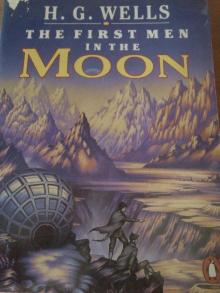 The First Men in the Moon
The First Men in the Moon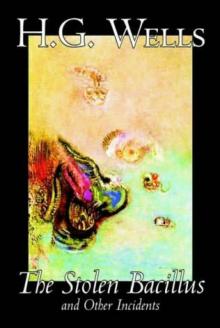 The Stolen Bacillus and Other Incidents
The Stolen Bacillus and Other Incidents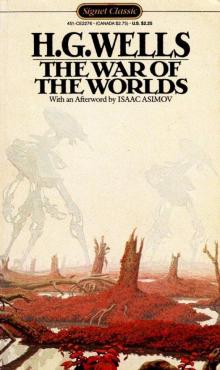 The War of the Worlds
The War of the Worlds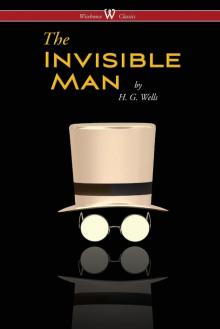 The Invisible Man: A Grotesque Romance
The Invisible Man: A Grotesque Romance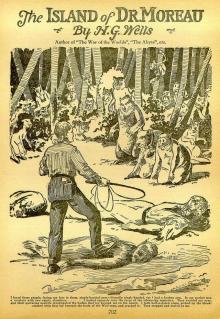 The Island of Doctor Moreau
The Island of Doctor Moreau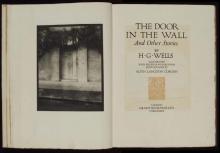 The Door in the Wall, and Other Stories
The Door in the Wall, and Other Stories The Best Science Fiction Stories of H G Wells
The Best Science Fiction Stories of H G Wells The Sea Lady
The Sea Lady The Wonderful Visit
The Wonderful Visit Love and Mr. Lewisham
Love and Mr. Lewisham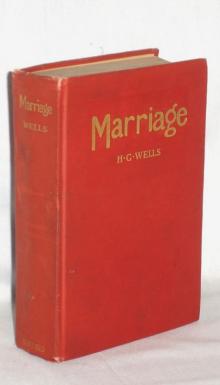 Marriage
Marriage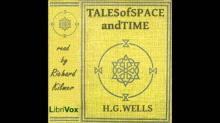 Tales of Space and Time
Tales of Space and Time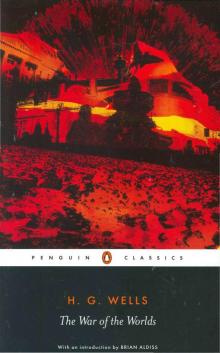 The War of the Worlds (Penguin Classics)
The War of the Worlds (Penguin Classics) Twelve Stories and a Dream
Twelve Stories and a Dream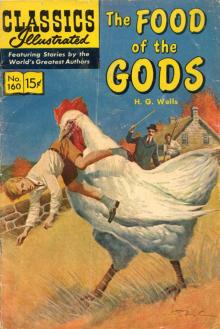 The Food of the Gods and How It Came to Earth
The Food of the Gods and How It Came to Earth Tono-Bungay
Tono-Bungay The War in the Air
The War in the Air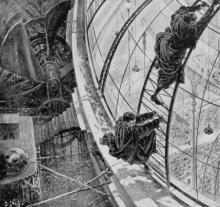 The Sleeper Awakes
The Sleeper Awakes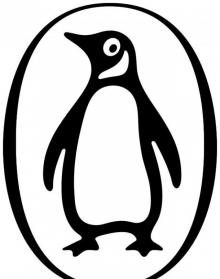 The Country of the Blind and Other Stories
The Country of the Blind and Other Stories Kipps
Kipps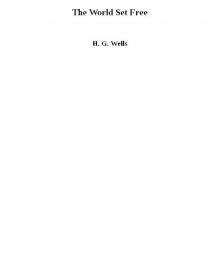 The World Set Free
The World Set Free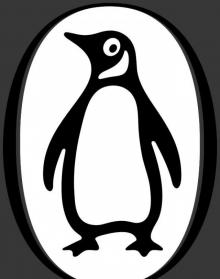 The Country of the Blind and other Selected Stories
The Country of the Blind and other Selected Stories Ann Veronica
Ann Veronica Ann Veronica a Modern Love Story
Ann Veronica a Modern Love Story The Time Machine and The War of the Worlds
The Time Machine and The War of the Worlds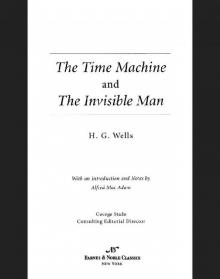 Time Machine and The Invisible Man (Barnes & Noble Classics Series)
Time Machine and The Invisible Man (Barnes & Noble Classics Series)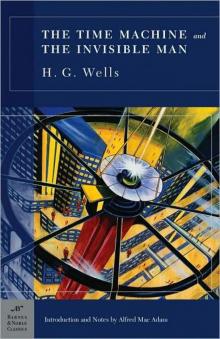 The Time Machine and The Invisible Man
The Time Machine and The Invisible Man The Island of Dr. Moreau
The Island of Dr. Moreau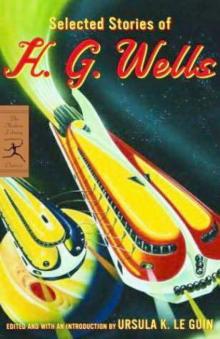 Selected Stories of H. G. Wells
Selected Stories of H. G. Wells Island of Dr. Moreau
Island of Dr. Moreau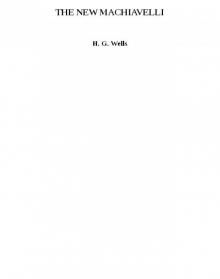 THE NEW MACHIAVELLI
THE NEW MACHIAVELLI